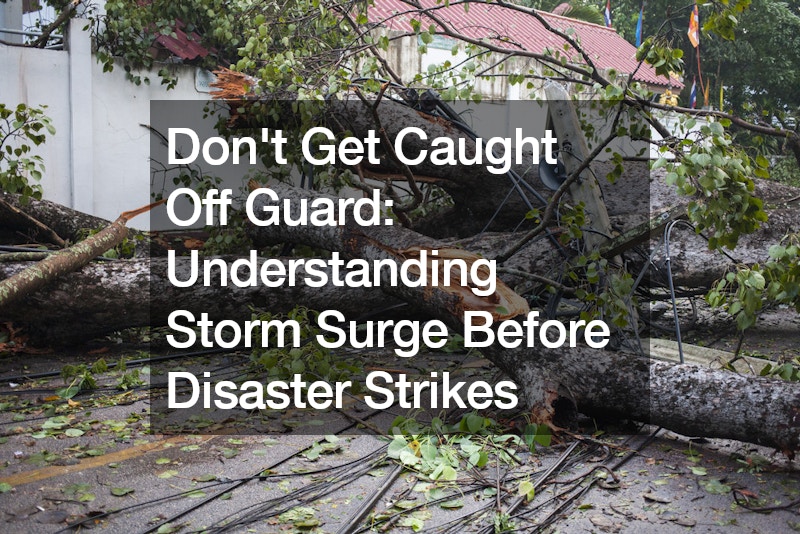

Hurricanes are powerful forces of nature, and their destructive potential is widely recognized. However, many people underestimate the dangers of storm surge, often the deadliest and most destructive aspect of a hurricane. While high winds can cause significant damage, storm surges can leave a path of devastation, inundating coastal areas with walls of water that leave behind a trail of wrecked homes, flooded streets, and displaced communities.
This article delves into the phenomenon of storm surge, helping you understand its causes, identify areas at risk, and prepare for its potential impact. By being informed about storm surge, you can make informed decisions to safeguard yourself and your loved ones during a hurricane.
What is Storm Surge?
Storm surge is not simply a matter of large waves hitting the shore. It’s a complex phenomenon caused by the interaction of powerful storm winds with the ocean’s surface. As a hurricane churns, strong winds push a massive amount of water in the direction they’re blowing. This accumulated water gets squeezed against the coastline, causing the sea level to rise dramatically above normal tide levels.
Imagine a bathtub filled with water. Pushing one side of the water down would cause the water level on the opposite side to rise significantly. This essentially happens with storm surge, except on a much larger and more powerful scale.
Why are Some Areas More Vulnerable?
While all coastal areas face some degree of storm surge risk, certain factors can exacerbate the threat. Here’s what makes some locations more vulnerable:
Low-lying areas: As the name suggests, low-lying coastal areas are particularly susceptible because there’s less elevation to impede the rising water.
Concave shorelines: Bays, sounds, and inlets can act like funnels, concentrating and amplifying the storm surge as the water gets trapped within these concave shapes.
Shallow coastal waters: Shallow water allows the surge to reach further inland, increasing the area affected by flooding.
The Devastating Impact of Storm Surge
Storm surge can be a silent killer, rising rapidly and reaching heights of 20 feet or more above normal sea levels. This wall of water can have catastrophic consequences:
Flooding: Storm surge inundates coastal areas, flooding streets, homes, and businesses. This flooding can trap people inside buildings, damage infrastructure, and contaminate freshwater supplies.
Erosion: The powerful surge can erode beaches and shorelines, causing significant property damage and altering the coastal landscape.
Debris: As the surge recedes, it carries debris with it, posing additional hazards and hindering recovery efforts.
Preparing for Storm Surge: Knowledge is Power
The key to staying safe from storm surge is being prepared. Here are some essential steps you can take:
Know your risk: Find out if your home is in a storm surge evacuation zone. Coastal communities often have designated evacuation zones based on their vulnerability.
Develop a plan: Create a hurricane preparedness plan that includes evacuation routes, communication strategies, and a storm surge evacuation plan if necessary.
Stay informed: Monitor weather reports closely during hurricane season and heed all warnings and evacuation orders issued by local emergency management officials.
Assemble a storm surge kit: Prepare a kit with essential supplies like food, water, medications, first aid supplies, and important documents to sustain you in case of an evacuation or power outage.
Beyond the Storm: Rebuilding and Recovery
Unfortunately, even with the best preparation, a hurricane can leave a trail of destruction. Storm damage services become crucial for rebuilding and restoring communities in the aftermath of a storm surge. These services encompass a wide range of expertise, including:
Structural repairs: Specialists can assess and repair storm-damaged structures, ensuring buildings are safe for reoccupation.
Flood remediation: Companies can offer services to remove floodwater from homes and businesses, prevent mold growth, and expedite the drying process.
Debris removal: Removing debris from storm surge events is essential for facilitating recovery efforts and restoring functionality to affected areas.
Understanding storm surge and taking proactive measures to prepare can significantly reduce your risk during a hurricane. Don’t get caught off guard – stay informed, develop a plan, and be prepared to face this powerful and often underestimated threat. Remember, a little preparation can make a world of difference when facing the destructive forces of nature.
.
